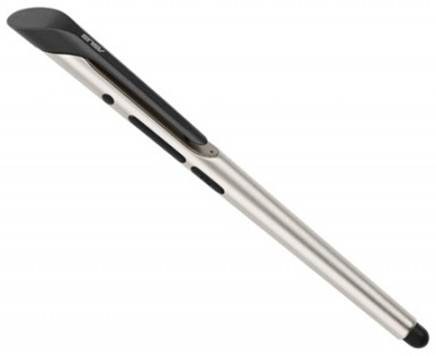While not perfect, the ASUS PadFone
marks a truly unique and wholesome mobile computing experience
Between the layers that form the ASUS
PadFone experience is a spark of genius. An idea, the simple uniqueness of
allowing a smartphone to be docked into a tablet, was seen, believed, and now
daringly executed. But is the execution here as intuitive as its vision?

ASUS
PadFone
The PadFone experience is centred on the
titular smartphone itself, which is a 4.3-inch device powered by a 1.5GHz
dual-core processor. The PadFone can be docked into the PadFone Station,
essentially a 10.1-inch tablet. You simply pop-open the Station's dock
compartment and slide the PadFone in until it clicks in place, powering the
Station almost instantly. The wonderful thing here is how seamless the
transition is, as the Station will be able to use and continue any app the
PadFone is running. It's unique, and in the whole, very well executed.
Individually, the PadFone is by no means
half-baked. The Super AMOLED display is sharp and bright, and the phone's
overall solid built is complemented by the ZENBOOK-like concentric aesthetics.
You might scorn at the dual-core CPU, but it surprisingly manages a very snappy
performance that handles both the phone and the tablet very well. And Android
4.0, with a minimally tweaked Ul, runs and works excellently. Even the camera
here is decent, and praise have to be given to the loud and clear SonicMaster
audio speakers.
Part of the PadFone's ecosystem also include
the optional Station Dock, which docks a keyboard to the tablet. Similar to the
Transformer tablets, this both boosts the battery life to impressive levels and
allow USB 2.0 connectivity. There is also the innovative Stylus Headset, which
is a Bluetooth headset masquerading as a stylus. It vibrates and answers calls,
too!
As unique as this ecosystem is, it's not a
wholly perfect one. For one, the Station itself doesn't work without the
PadFone docked in; you're not owning two devices, as they only work in a whole.
The Station is also bulkier and heavier than most other Android tablets, which
may not be what everyone's looking for.

The
optional PadFone Stylus Headset, which will alert-vibrate and let you answer
calls
Pros and cons
Pros: Truly Unique Snappy Performance
Seamless Transition Nifty accessories
Cons: PadFone Station only works with
PadFone Station rather bulky
Chip conclude
The ASUS PadFone is not perfect. But like
the first step of a new ground trodden, it may not be steady, but it's
advancing nonetheless. The idea and uniqueness is undeniable, and while there
is room for improvement, there is no denying the layers of excellence that now
form the ASUS PadFone. That itself is worthy of our praise.
|
Specifications
Price: $770 (PadFone + PadFone Station
Bundle)
Website: www.asus.com
Operating System: Android 4.0 (Ice Cream
Sandwich)
Processor: 1.5GHz dual-core Qualcomm Snapdragon
S4 8260A
Frequency: HSDPA 2100 / 900 EDGE / GPRS /
GSM 850 / 900/ 1800/1900
Screen: 4.3-inch qHD 960 x 540 Super AMOLED
(PadFone), 10.1-inch WXGA 1280 x 800 TFT (PadFone Station)
Connectivity: Bluetooth, USB2.0, Wi-Fi, 3.5mm
audio
Others: 8-megapixels AF f2.2 rear camera,
VGA front camera, PadFone Station Dock (optional), PadFone Stylus Headset
(optional)
Dimensions: 128 x 65.4 x 9.2mm (PadFone), 273
x 176.9 x 13.55mm (PadFone Station)
Weight: 133g
Ratings
Performance: 4/5
Features: 5/5
Design: 5/5
Value: 4/5
|